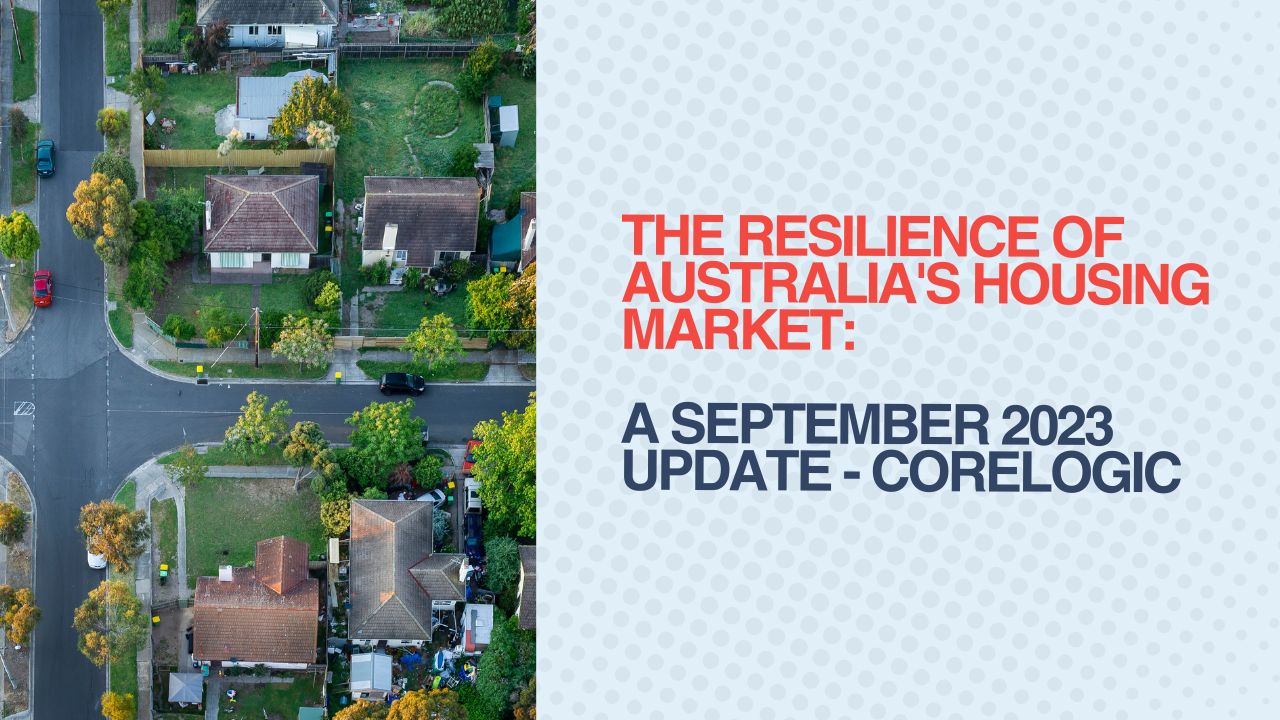The Resilience of Australia’s Housing Market: A September 2023 Update – CoreLogic
- February 27, 2024

The Australian housing market has continued to defy expectations and demonstrate its remarkable resilience. As we delve into CoreLogic’s September housing market update, it becomes evident that the real estate landscape is far from stagnant. With six consecutive monthly increases in the national home value index, there’s a lot to unpack.
Steady Growth Across the Nation
In August, the national home value index experienced a 0.8% increase, showcasing sustained growth. This positive trajectory follows a two-month trend of slowing capital gains earlier in the year. Since bottoming out in February, the index has risen by an impressive 4.9%, adding approximately $34,301 to the median dwelling value.
Regional Insights
The housing market isn’t a one-size-fits-all scenario. While every capital city, except Hobart, recorded a rise in dwelling values, the degree of recovery varies. Sydney leads the pack with an impressive 8.8% gain since January. Brisbane isn’t far behind, with values up by 6.2% since February. On the other end of the spectrum, Hobart’s home values have remained unchanged since stabilising in April, while the ACT has seen a modest 1% rise since April. These two regions also stand out as the only ones where advertised supply is tracking higher than a year ago, indicating a delicate balance between buyers and sellers.
Houses vs. Units
At the combined capital cities level, the recovery has been sharper for house values, which have risen by 6.3% since February, compared to a 4.9% increase in unit values. This divergence follows a more significant drop in house values during the preceding downturn, making their resurgence all the more notable.
Regional Realities
In Regional Australia, the picture is more diverse. Home values across these areas have risen by 1.6% since February, compared to a 6% rise in the combined capital cities. While values are on the rise in Regional Queensland and Regional South Australia, they remain relatively flat in Regional Western Australia and Tasmania.
Supply Dynamics
Supply plays a critical role in shaping the housing market, and it’s been a key factor in maintaining upward pressure on home values. Despite a subtle rise in new listings over the past two months, total advertised supply levels remain 15.5% lower than a year ago across the combined capitals and nearly 19% below the previous five-year average. Low supply levels persist in cities like Perth, Adelaide, and Brisbane, where total listing counts are more than 40% below the previous five-year average.
Challenges Ahead
While the housing market is on the upswing, challenges loom on the horizon. Rising stock levels, particularly in some regions, could support a deceleration in value growth. Buyers continue to face hurdles, especially in obtaining credit, as lending standards remain stringent. The requirement for borrowers to demonstrate their ability to repay loans at mortgage rates exceeding 9% adds an extra layer of complexity.
A Balanced Outlook
Despite these challenges, there are positive factors at play. Lower inflation and the expectation that interest rates have peaked should gradually boost consumer sentiment, potentially driving higher commitment decisions, such as buying or selling a home. Unemployment is expected to remain below average levels, and strong population growth, along with net overseas migration, is set to continue supporting housing demand.
In Conclusion
The Australian housing market is displaying remarkable resilience, with steady growth observed across various regions. While challenges persist, including rising stock levels and mortgage stress, the outlook remains optimistic. Factors like lower inflation, stable employment, and sustained demand underpin the market’s strength.
As we navigate through the evolving real estate landscape, it’s crucial to stay informed and adapt to changing conditions. The data from CoreLogic’s September update underscores the importance of a balanced and informed approach to property investment in this ever-changing market.




